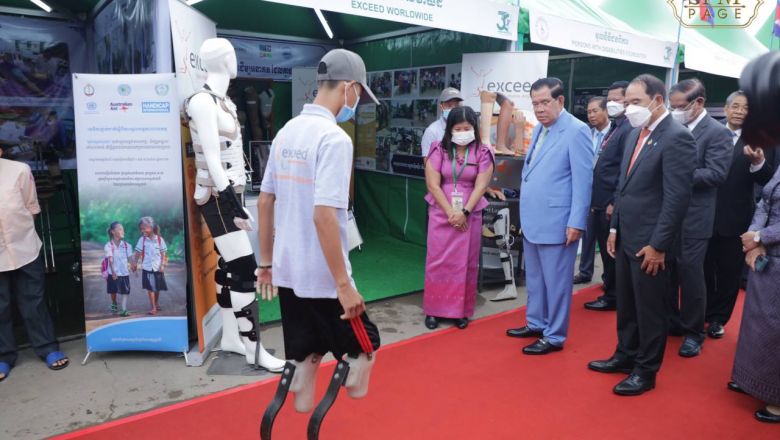Vietnam border trade pact clears Senate
Vietnam border trade pact clears Senate
A border trade agreement signed between Cambodia and Vietnam on November 8 last year – expected to be promulgated soon, having cleared the Senate – should ensure that two-way imports and exports grow at an annual rate of at least 15-20 per cent in the coming years, according to Ministry of Commerce spokesman Penn Sovicheat on May 3.
That target should be relatively easy to meet, given that Customs (GDCE) figures show that the Cambodia-Vietnam merchandise trade progressed at a compound annual growth rate (CAGR) of 27.71 per cent for the 2015-2022 period, with the lowest year-on-year increases logged in 2022 (19.64%), 2019 (20.32%) and 2017 (22.16%).
Sovicheat recounted to The Post that minister Pan Sorasak on April 24 led a commerce ministry delegation to present and defend a draft law on the ratification of the November 8 agreement before the Senate’s ninth commission – the Commission of Public Works, Transport, Telecommunication, Post, Industry, Mines, Energy, Commerce, Land Management, Urban Planning and Construction.
Such meetings with the Senate’s commissions customarily occur after a draft law has been greenlit by the National Assembly (NA), and before the document is presented during a Senate session. With the Senate’s approval, the instrument is returned to the NA to proceed with a signature from the King – or acting head of state – to be promulgated.
The commerce ministry affirmed in a statement that the Senate approved the aforementioned draft law on the ratification of the Cambodia-Vietnam border trade agreement at a May 2 session, noting that Sorasak had also led the delegation that defended the instrument before the parliamentary body.
Sovicheat said that the border trade pact “will be an important tool for both countries to promote and boost trade. It should be pointed out that even prior to this deal, the two countries had a variety of trade mechanisms at their disposal to facilitate goods exchange and commerce, which is why we’ve seen two-way trade continue to grow stronger with each passing year.
“The two countries are also signatories to regional agreements, which are also complementary mechanisms to promote trade,” he added.
In addition to the at-least 15-20 per cent annual growth target he put forward, Sovicheat foresees meaningful boosts in the export of cashew nuts and other agricultural goods to Vietnam.
Royal Academy of Cambodia economics researcher Ky Sereyvath told The Post that bordering countries are key buyers of Cambodian produce, much of which is processed and re-exported due to a distinct lack of finished-product processing facilities in the Kingdom.
“Our neighbours remain the main markets for our agricultural products. The border trade agreement further promotes the exchange of goods, and of note, inspires confidence among businesspeople in either country when it comes to the promotion of trade,” he said.
Socheat believes that the deal will encourage new strategies to further strengthen business connectivity and open doors for partnerships, generate business and employment opportunities, and support production and family-run operations, thereby improving the livelihoods of Cambodians living near the border with Vietnam.
“This agreement will be a mechanism to facilitate better border trade between the two countries, responding to economic development as well as other evolving circumstances,” he said.
Provisional Customs (GDCE) statistics show that the Cambodia-Vietnam merchandise trade clocked in at $6.136 billion in 2022, up 19.64 per cent from 2021 and up 453.96 per cent from 2015.
Last year, Cambodian exports to and imports from Vietnam amounted to $2.169 billion and $3.967 billion, respectively, up 9.25 per cent and up 26.20 per cent versus $1.985 billion and $3.144 billion in 2021, expanding the Kingdom’s trade deficit with its
neighbour by 55.25 per cent on a yearly basis to $1.799 billion.
Statistical discrepancies and asymmetries in trade figures are common between different sources, however, with the foreign ministry putting the 2022 two-way trade volume at a whopping $10.57 billion – a whole 72 per cent higher than the GDCE value – which it recorded as an increase of 10.88 per cent from $9.5 billion in 2021. These numbers are corroborated by official Vietnamese statistics.
Regardless, no breakdown was immediately available of the specific items traded between Cambodia and Vietnam for any interval during the 2022-2023 period.
However, according to Trading Economics, “rubbers” and “mineral fuels, oils, distillation products” – or chapters 40 and 27 of the Harmonised System (HS) – were Cambodia’s top categories of exports to and imports from Vietnam, respectively, in both 2020 and 2021.
Expressing some proportions by their possible ranges of values so as to account for rounding errors, “rubbers” and “mineral fuels, oils, distillation products” accounted for 56.93 per cent and 22.92-23.00 per cent of their corresponding 2021 totals – compared to 52.341-52.346 per cent and 21.44-21.53 per cent in 2020, figures from the website suggest.














